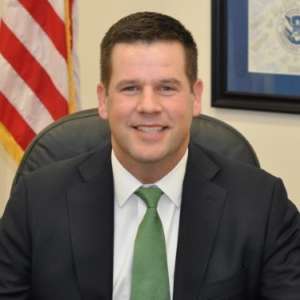
IRS taking ‘fundamental shift’ in how it funds RPA, emerging tech pilots
The IRS is taking the next step in its robotic process automation journey, having launched a pilot program that bankrolls experimental technology solutions.
The IRS is taking the next step in its robotic process automation journey, having launched a pilot program that bankrolls experimental technology solutions through incremental funding if they show potential.
According to the agency’s draft solicitation it posted Aug. 2, the agency will award up to $7 million for its first challenge, which is focused on developing robotic process automation tools to improve DATA Act reporting.

Harrison Smith, the IRS’s deputy chief procurement officer, said the agency’s agile adoption of emerging technology marks a “fundamental shift” for the IRS, and reflects an effort to emulate other agencies’ other transactional authority (OTA). This allows them to incubate projects through incremental funding — and pull the plug on that money if those projects don’t yield results.
“We in the government don’t always have that same mindset of ‘I have a portfolio of five things. I’m only going to fund those initially for six months, six weeks – whatever it is.’ Let me pivot to the ones that work, and let me have them prototyped and then the next step is to test it with the user. I don’t want to do that in eight years, I want to do that in eight weeks,” Smith said Wednesday at NextGov’s emerging technology conference.
The IRS, Smith said, remains in the “nascent stages” of RPA adoption, but automation plays a central role in the IRS’s strategic and business modernization plans, and also serves as a major part of the President Management Agenda’s focus on shifting federal employees from low-value to high-value work.
“For me, one of the more exciting applications or positive repercussions of shifting from low-value work to high-value work is getting us out of, ’This is the way that it’s been done before, and given the risk that I have on my plate right now, I can’t re-engineer this or rethink this, because I have to keep the train moving,’” he said.
Last month at the Association of Government Accountants’ Professional Development Training in New Orleans, Mitch Winans, a special assistant in the agency’s procurement office, said the IRS has deployed RPA tools that will help run compliance checks before contracts are awarded, saving the agency up to 18,000 hours saved annually through these bots.
And looking ahead, Smith said his office has identified as many as 15 use-case scenarios for RPA.
“It’s an area where we definitely can see the return on investment in the near-term,” Smith said in an interview with Federal News Network. “We’re going to continue to pursue what’s best in terms of the low-hanging fruit, but also that mid-range game and also the broader applications of the technology moving forward.”
The agency’s early steps with RPA include a contract “clause logic check” and a contractor responsibility determination bot that can automate the manual work of as many as 15 IRS employees.
Identifying biggest contractor hurdles
To help identify areas where contractors face the biggest burden doing business with the IRS, the agency has issued customer service surveys to vendors that support the Office of the Chief Information Officer.
“For being an office that buys stuff, we’re in sales quite a bit. We have to sell the concept of, ‘Hey, the IRS is willing to engage in these types of emerging technologies You should come contract with the government, even though you may not think it’s a good partner to have, because we think it is,’” Smith said.
Beyond RPA tools, the IRS is also looking to launch online chatbots to help contractors track down information more quickly.
Related Stories
 Exclusive
Exclusive How robotics process automation is opening doors for agency innovation, transformation
Looking ahead, the IRS is also looking to stand up a working capital fund, as authorized under the Modernizing Government Technology Act. While some agencies have faced legal hurdles to set up those funds, Smith said the agency shouldn’t have any trouble because it has contracting authorities for multi-year funds.
Setting up the fund, he added, is a matter of “when, not if,” and should enable greater IT modernization.
“If the CIO has the ability to say, ‘I saved 20%, I’m going to put that 20% in the working capital fund and now I can use it to work on emerging technology’ … it really opens up the aperture in terms of what we’re able to do and the pace of it,” Smith said.
Copyright © 2025 Federal News Network. All rights reserved. This website is not intended for users located within the European Economic Area.
Jory Heckman is a reporter at Federal News Network covering U.S. Postal Service, IRS, big data and technology issues.
Follow @jheckmanWFED




